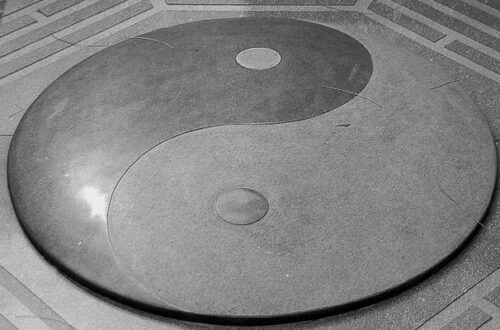
Aikido: 合氣道 or 合気道?
To determine whether Aikido should be written as 合氣道 or 合気道, it is essential to understand the history and differences between the kanji 氣 (Ki) and 気 (Ki).
The character 氣 is the original kanji from China, while 気 is the simplified Japanese version. 氣 (Qi in Chinese) is composed of the radicals 气 and 米. 气 (Qi) is the original form of 氣, pictogram appears in Jiaguwen 甲骨文 (script inscribed on animal bones and tortoise shells) for cloud vapor or moving gas, also representing inhaling and exhaling breath. 米 is rice. The earliest recorded use of 氣 dates back to 25-220 AD, initially associated with food, due to rice being a staple in China, and later with weather. Ancient Chinese text 左傳·昭公元年 mentions six types of 氣, 陰 (Yin), 陽 (Yang), 風 (Wind), 雨 (Rain), 晦 (Darkness), and 明 (Brightness), which represent six natural phenomena. 氣 is considered a fundamental element of the world, with everything being a product or result of its movement. It also refers to life energy, as breathing is a basic human activity and its rhythm and strength reflect a person’s health. 氣 is a key concept in many Chinese martial arts and traditional Chinese medicine.

Evolution of the Chinese character Qi
Early Japanese culture adopted the kanji 氣. Over time, its meaning evolved to align with Japanese culture, covering many different aspects. For example, 元氣 Health, 勇氣 Courage, 怨氣 Resentment, 口氣 Manner of Speaking and 空氣 Air. The kanji 氣 was widely used before World War II, at which time 気 did not yet exist. After the war, Japan came under the control of the GHQ (General Headquarters of the Allied Powers), which led to a revision of kanji with the intention of completely abolishing its use due to concerns about its difficulty, favoring the romanization of Japanese instead. The Ministry of Education decided to minimize the number of kanji by compiling the Toyo Kanji 当用漢字 list, which included the most commonly used kanji, along with simplified kanji known as Shinjitai 新字体. In Shinjitai, 氣 was simplified to 気. This transition was swift, leading to the gradual fading of 氣. One may observe that in O Sensei’s calligraphy, most instances feature 氣 rather than 気, as he was already in his 60s when the simplified form 気 was introduced. However, 気 also appears in some of his later calligraphy. Today, 気 is the mainstream in everyday usage, as seen in the Aikikai Foundation’s official name: 公益財団法人合気会.
It is believed that the simplification aimed to make the characters easier to write, thereby improving literacy and comprehension to support democratization in Japan. However, an alternative theory exists. 氣 can be interpreted as life energy, with the 米 radical symbolizes sustenance and abundance, suggesting that energy is dynamic, constantly moving, and spreading in all directions. In contrast, 気 replaced 米 with 㐅, implying closure or constraint. Thus, 氣 implies the expansion of energy, while 気 symbolizes the containment of energy – almost the opposite. (Note: there is no clear evidence in etymology to support this interpretation of 㐅. It is actually a variant character of 五, which represents the number “five.”).

O Sensei’s calligraphy – Aikido | Manifest, Hidden, Divine, Aiki | Aikido | Vitality
Some believe that since Japanese culture highly values the concept of Kotodama 言霊 (the belief that spirits reside in words and that words possess significant power), changing 氣 to 気 may have been an attempt to sever the Japanese people’s connection with these spiritual forces and to limit their energy, preventing future conflicts. While this theory is intriguing, it remains speculative and likely unverifiable.
Regardless of which theory one subscribes to, from a martial arts perspective, both 氣 and 気 can refer to life energy, although their forms and implications may be different as some suggest. In today’s practice, however, they can be used interchangeably. The choice between 合氣道 and 合気道 depends on the context and the intended emphasis on the cultural and historical significance of the kanji, or simply a personal preference.
Suggested reading: Understanding the Meaning of Bu 武: A Historical Perspective
Author’s Note: We appreciate your readership! This article serves as a preliminary introduction to the subject matter. While we aim for accuracy, we cannot guarantee the content’s precision and it may contain elements of speculation. We strongly advise you to pursue additional research if this topic piques your interest. Begin your AikidoDiscovery adventure! 🙂




